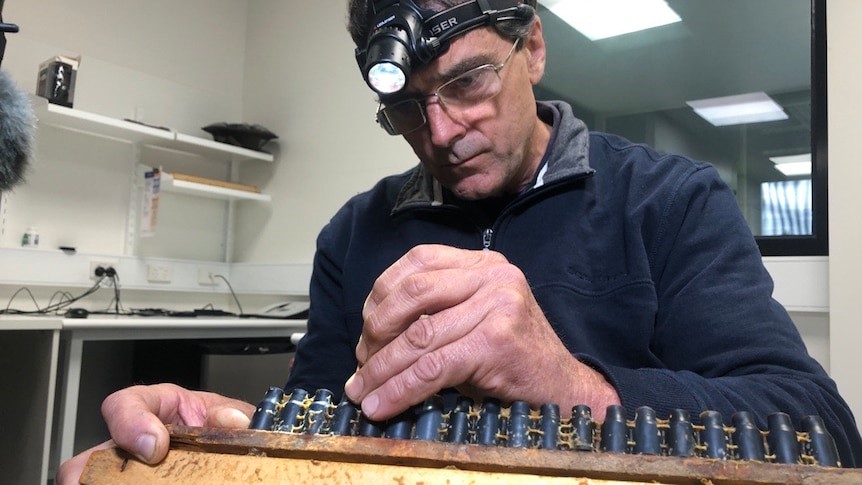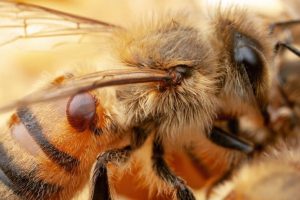Dutch honey bees resistant to varroa mite imported to Australia to help guard against the pest
Hunched over a bench in a modest caravan, apiarist and bee breeder David Briggs slows his breathing and focuses intensely on the work at hand.
Key points:
- It’s the first time in 15 years bees have been imported into Australia
- The foreign queen bees have special traits to protect them against the blood-sucking varroa mite
- The pest has ravaged bee colonies around the globe, and Australia is the only continent still free of varroa
In this laboratory in north-east Victoria, his skill, if he’s successful, will help shape the future of Australia’s honey bee population.
Constrained in a tiny tube is a queen bee, rendered unconscious by a minute amount of CO2 gas.
She’s the first of several very special queens he’s preparing to artificially inseminate with semen collected from specially selected Australian drones.
“We use AI [artificial insemination] to control the mating and to ensure that the queen is mating with the genetic material that were looking for,” Mr Briggs said.
It requires a steady hand and a powerful microscope.
Mr Briggs has performed the procedure thousands of times over the years.
But this time there’s a great deal more riding on his skill and cool nerves.
Fighting a destructive pest
The queen bees are progeny bred in the Netherlands.
They’re the first successful importation of bee genetics into Australia in 15 years.
What’s more, these Dutch queens have special traits that give them some defence against Varroa destructor, a blood-sucking mite that has ravaged bee colonies around the globe.
A varroa mite, a common pest that can weaken bees and make them more susceptible to pathogens, feeds on a honey bee.
“Their own, effectively communal, hygiene mechanism removes mites or interrupts the mite’s breeding cycle before it can propagate in the colony,” Mr Briggs said.
Australia remains the only continent still free of varroa mite.
Despite stringent measures around the nation’s entry points, most believe it will inevitably breach our biosecurity defences.
It is present in New Zealand, Papua New Guinea and South-East Asia. Feral beehives infected with the parasite can easily hitch a ride on any of the thousands of container ships that dock in our ports.
So the $100-million-a-year apiary industry, backed by the horticultural industry, is on the front foot.
Some produce, such as almonds, avocados and melons, is entirely dependent on honey bees for pollination.
Jody Gerdts, apiarist and bee scientist, said the importation was profoundly important to Australia’s honey bees.
“A milestone is an understatement,” said apiarist and scientist Jody Gerdts.
“I would say that it’s super important.”
Dr Gerdts saw varroa’s path of destruction in her native United States 30 years ago.
Wild honey bee populations there are only now starting to recover.
A global effort
The quest to breed varroa-resistant honey bees has become a cooperative global effort by apiarists.
It began in 2013, when Dutch apiarist JanBart Fernhout’s prized queens were killed by varroa mites…….
To read the complete article go to;










